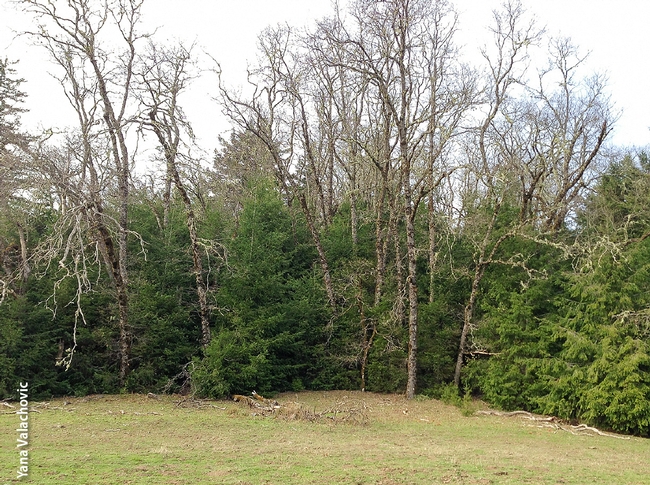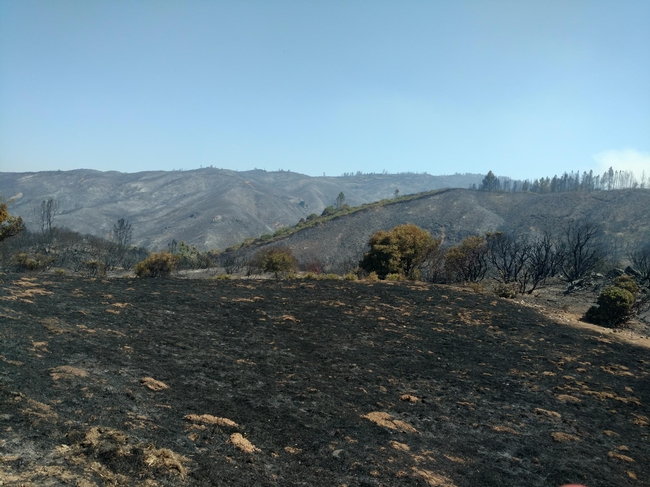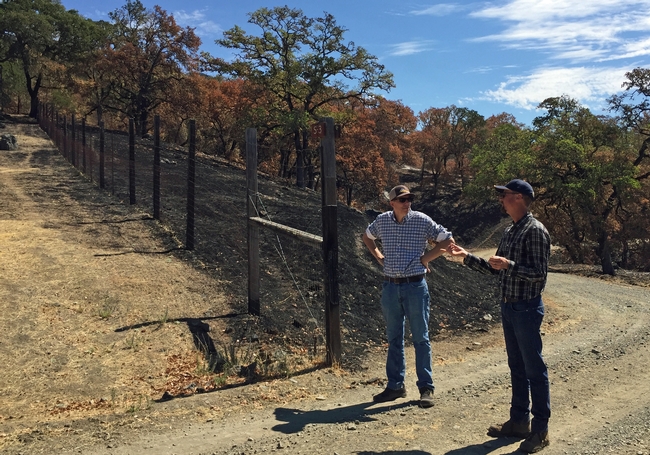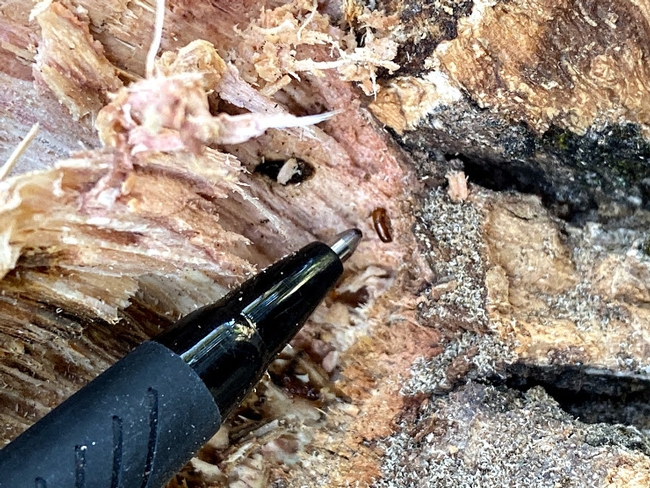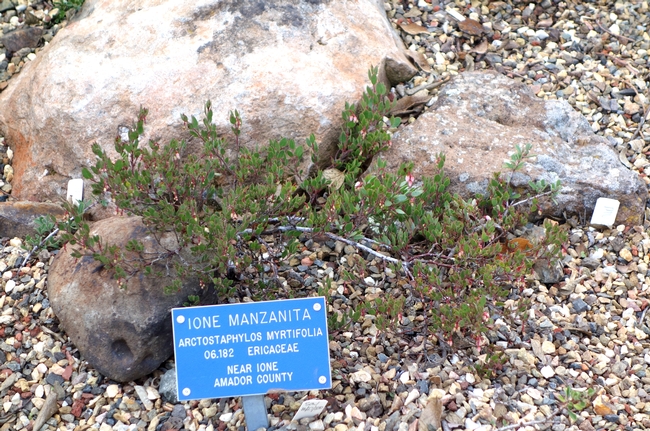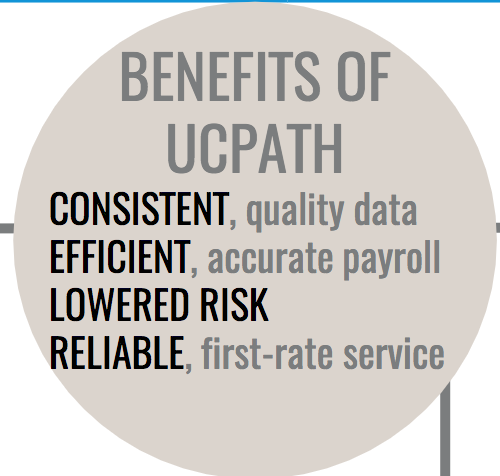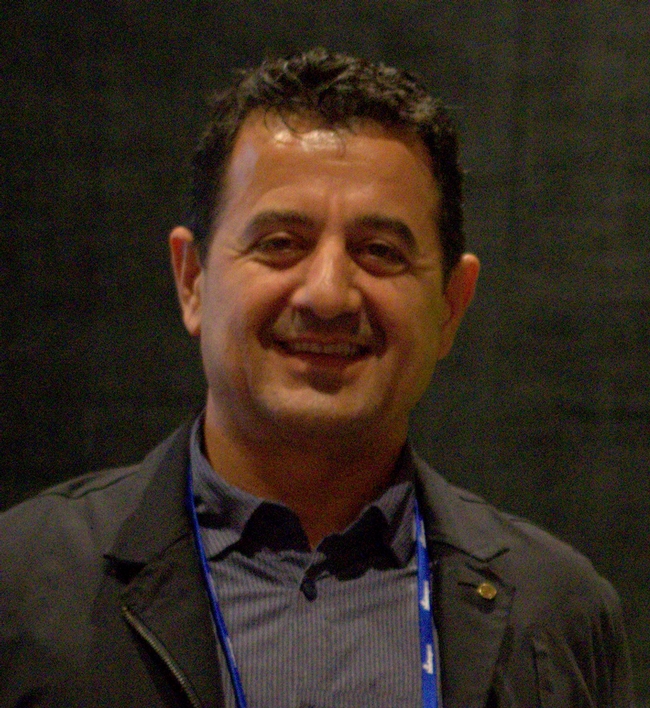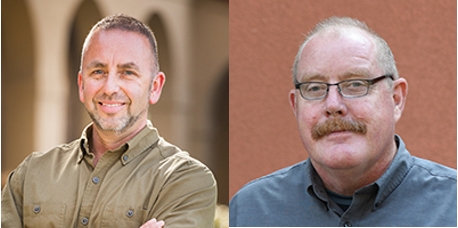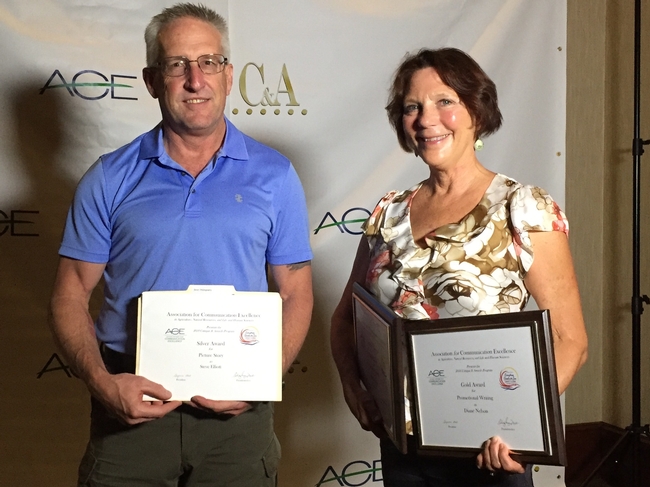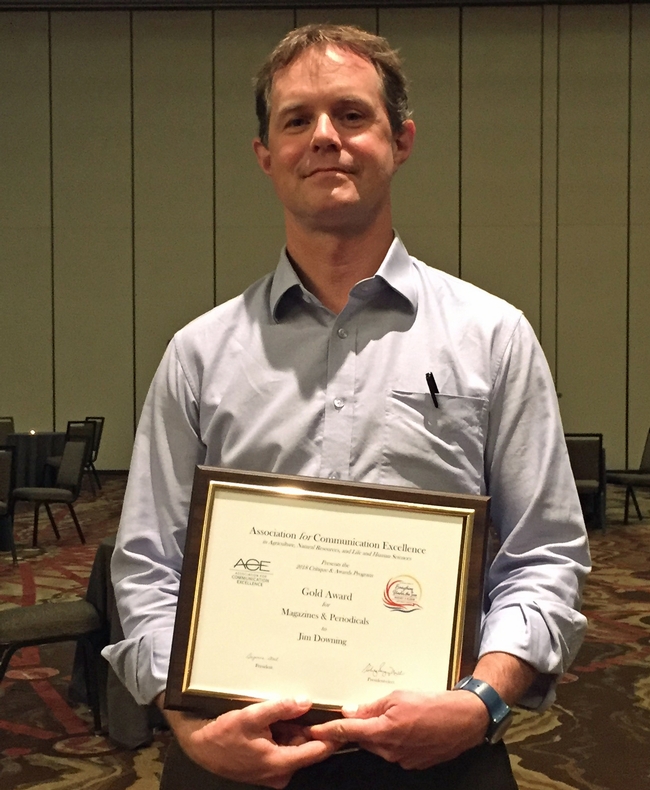Posts Tagged: Oak Woodlands
Hundreds sign up for online oak woodland workshop
California oak woodlands are highly prized ecoregions where stately trees, many of them hundreds of years old, are cornerstones of a habitat for wildlife and native plants. Sadly, some of these ecosystems are seriously threatened by exotic pests and diseases, encroachment by less desirable vegetation, and wildfire.
Each year, UC Cooperative Extension hosts workshops to share scientific developments aimed at conserving these important habitats – and the economic value of ranching – on oak woodlands, which are found on the lower elevation slopes of the Sierra Nevada, the Coast Range and other foothill areas of California.
Typically, the workshops are held in person and draw moderate-sized audiences for presentations, questions and answers, and field trips. Because of the COVID-19 pandemic, this year's workshop was offered online in April with pre-recorded presentations available for viewing at the participants' convenience and a live question-and-answer session on Zoom.
The retooled event garnered 500 registrants, over 300 views of the YouTube videos and 140 participants in the live Q&A session. The presentations and Q&A session are still available online for future viewing as well.
“People from all walks of life participated, including those with professional and personal interest in oak woodlands,” said Yana Valachovic, UCCE forest advisor in Humboldt and Del Norte counties and a conference organizer.
Presentations at the 2020 conference included the following topics:
Encroachment by Douglas-fir
In Northern California, the biodiversity of oak woodlands is being threatened by Douglas-fir encroachment. The oaks' shade helps the young conifers get established with protection from harsh sun. In time, the fast-growing Douglas-fir trees pierce the oak canopies and begin to crowd out the areas' native understories, which are important for the diversity of birds, mammals and reptiles attracted to oaks.
As the Douglas-fir continue to grow and multiply, they threaten the very lives of the oak trees and the unique ecosystem they dominate.
To better understand the Douglas-fir encroachment, Valachovic established 10 research sites in Humboldt and Mendocino counties to gather information about the fate and the age of oaks. She and her research partners determined the ages of the oaks and firs, and counted the seedlings, saplings, snags and understory vegetation.
“With this research, we were able to demonstrate that even though the oak trees can be smaller in diameter they are much older than the Douglas-fir trees,” Valachovic said. “The encroachment process is happening quickly, and the oaks are falling out of the system.”
The shift appears to have been initiated in the mid-19th and early-20th centuries, coinciding with the Gold Rush and wildfire suppression.
With the data confirming Douglas-fir encroachment, Valachovic turned her attention to oak woodland restoration. At 14 sites in Humboldt and Trinity counties, her team studied the effects of Douglas-fir removal.
“Grasses and forbs under the oaks reestablished. Diameter growth on the oaks increased,” she said.
These research findings contributed directly to changes in policy that had previously limited land owners' ability to remove and sell conifers encroaching on oak woodland. The research also helped create new funding opportunities to support oak woodland restoration and conservation in Northern California.
Case study of oak woodland wildfire recovery
In July 2018, about two-thirds of the 5,289-acre UC Hopland Research and Extension Center was burned by the River Fire.
The transformation of the land, which had likely been without a large wildland fire for at least 100 years, was intense and stressful, said UC Cooperative Extension forest advisor Michael Jones. However, it also provided a unique opportunity for researchers to compare the impact of wildfire on the resiliency of vegetation on grazed and ungrazed oak woodland.
Jones established 35 one-fifth acre research plots at the research center and collected data two months following the fire and one year later. The research will continue in the future to better understand long-term impacts, but Jones was able to share revealing early results at the workshop.
Right after the fire, in severely burned areas areas, the future of the oaks looked ominous. Jones predicted 40% tree mortality.
“The oaks were exposed to persistent, intense heat. They were cooked,” he said. “But two months after the fire, we were already seeing basal sprouts. This was an amazing response by the trees. Oaks are pretty damn tough.”
A year after the fire, surveys showed that tree mortality in the burned areas was 25%, much less than Jones' early predictions. While some management for specific situations in severely burned areas may be necessary – such as removal of hazard trees, reducing fuels in defensible spaces or removal to control invasive species – the results of this work show the trees recover naturally.
“Esthetically, I know these systems aren't as pleasing as they were before, but ecologically, they are healthy and recovering,” he said. “In 100 years, it will look just as good as before the fire.”
Fire impacts in woodland areas previously grazed and not grazed
The fire on the research station also permitted Jones to compare the fire's differing impact on non-grazed and grazed oak woodland. At first, the grazed areas looked almost unscathed with minimal flame scorching on the bark, while an area where the pasture hadn't been grazed for 25 years had evidence of much higher severity fire.
“Grazing is a phenomenal way to help manage fuels,” Jones said. However, the grazed areas displayed ecological shortcomings a year later.
“In grazed pastures, the large mature trees were still alive, but there was no oak regeneration (basal sprouting or seedlings),” Jones said. “In the ungrazed area, a lot of biomass had been killed, but there's nearly 100% resprout of oak trees and we have an impressive amount of oak seedling recruitment.”
Jones said he isn't discouraging grazing.
“But it is important to protect sites from grazing, and especially wildlife browse, when a landowner or land managers' objectives are to regenerate or conserve oak woodlands,” Jones said.
New ambrosia beetle another threat to California oaks
Akif Eskalen, UC Cooperative Extension specialist in the Department of Plant Pathology at UC Davis, has identified a new insect-fungus team that causes oak borer wilt in Northern California Valley and Blue Oaks. It is an ambrosia beetle, commonly known as Mediterranean Oak Borer, which carries several fungi in its mouth. The beetle bores into the tree and introduces fungi to grow for food. The fungi spreads and disturbs the transportation of water and nutrients, causing wilt in the tree.
The oozing and staining lesions on the bark are similar to other oak fungal diseases, such as Sudden Oak Death. The beetle – native of Mediterranean basin countries in Africa, Asia and Europe – cannot fly far, so most likely is transported for long distances on infested firewood.
During the workshop, Eskalen suggested not moving firewood, removing heavily infested trees and chipping infested wood into 1-inch particles to reduce the spread of the ambrosia beetle and its fungal partner. He asked viewers to report any suspected oak tree infestations to the local agricultural commissioner, CDFA Diagnostic Laboratories, UC Cooperative Extension advisors or CALFIRE. Chemical options for sparing oaks from the ambrosia beetles' devastation are under investigation.
Threats to oaks and other native plants from root rotting Phytophthora
Restoration plantings have inadvertently introduced plant pathogens to native oak woodland ecosystems in California, said Ted Swiecki of Phytosphere Research, an organization that provides consulting services related to natural resource management, horticulture, urban forestry, and agriculture. The group of pathogens causing the damage are largely from the Phytophthora genus, first described in the 1860s. The name translates from Greek to “plant destroyer.”
Swiecki has observed when Phytophthora infested plants and soils are introduced to native habitats, the pathogens can attack various native plants, including toyon, madrone, manzanita and full-grown oaks. Once established, the pathogen can spread along drainages, by moving soil from one area to another and by hitchhiking on equipment, tires and hiking boots.
The pathogen can easily be overlooked at nurseries, which, by their nature, have conditions that favor Phytophthora development. Plants at nurseries are well watered, have high root density and are often placed on the ground where they can pick up pathogens.
He said the best approach to tackling Phytophthora is not using nursery stock for restoration or beautification of natural oak woodland. Direct seeding, using natural regeneration, or onsite propagation are safer ways to enhance vegetation in oak woodland.
“It's easier to prevent Phytophthora from being introduced in the first place and much cheaper and more effective than trying to eradicate it later,” Siewcki said.
Final position proposals due Sept. 15 for 2018 Call for Cooperative Extension positions
On Aug. 1, phase 2 of the Cooperative Extension Positions Call process ended and phase 3 began. During phase 2, the Program Teams reviewed the 40 phase 1 proposals and submitted six additional proposals. All submitted proposals are posted on the 2018 Call for Position web page: http://ucanr.edu/2018callforpositions.
Phase 3:
- The statewide programs and institutes are now reviewing all 46 proposed positions to determine if there are any positions they feel are of higher priority.
- If so, they can propose up to two additional CE advisor positions and two additional CE specialist positions by Sept. 15 – keeping in mind that the more proposals there are at the end, the lower the probability of being approved for recruitment.
- The proposals that did not make the phase 1 final 40 can be picked up during these subsequent phases. They can be found on the proposal ideas web page. New proposals are not limited to these ideas.
After Sept. 15, Program Council will review all the feedback and make recommendations to the vice president.
“We thank the ANR network for actively engaging in this participatory process to strengthen and rebuild CE positions statewide,” said Wendy Powers, associate vice president.
ANR to join UCPath next spring
Preparations are underway for UC ANR to join UCPath in the spring. To ensure a successful transition to new systems and new processes, John Fox, executive director of Human Resources, recently hosted the first in a series of monthly meetings with business officers and administrative staff located in UC Cooperative Extension offices, at Research and Extension Centers and in administrative units.
UCPath is a systemwide initiative launched by the University of California to modernize its current payroll system, which is nearly 40 years old. Using new technology, UCPath will unify and standardize payroll, benefits and human resource systems for all UC employees.
Employees at Office of the President, UC Merced and UC Riverside have already made the transition. UCLA and UC Santa Barbara are scheduled to join UCPath this fall. UC Berkeley, UC Davis, UC Irvine and UC ANR are scheduled to join in April 2019.
This initiative involves a single payroll and HR technology system, a shared services center in Riverside, and the formation of UC ANR as a distinct business unit within UC. The formation of UC ANR as a stand-alone business unit, rather than as part of UCOP or a campus, is one of the strategic initiatives supported by President Napolitano, and provides an opportunity to improve efficiency and strengthen compliance and accountability.
“UC Path will transform the way we do business,” said Fox. “Our fiscal silos will be unified, hugely improving the accuracy of our fiscal data and the speed with which we can access it. It will also give all of us better access to information and improved tools for hiring and transaction approvals.”
Business officers and administrative staff will be key to the success of UCPath for ANR.
“They are the people who know how to get things done in ANR today,” Fox said. “We want to support them in becoming UCPath experts to help ANR employees navigate the new systems and processes.”
Business officers and administrative staff who missed the UCPath Network kick-off Zoom meeting with Fox can view a recording of the Aug 24 session at https://ucdavis.app.box.com/v/ucpathnetwork. The next monthly session will be on Wednesday, Sept. 26, 11 a.m. to noon.
Highlights of UCPath when it goes live in spring 2019:
- User-friendly, mobile-enabled portal to view and update personal data and manage benefits
- The UCPath Center in Riverside will help with benefits, payroll and personnel services
- Direct deposit in up to three accounts
- New recruitment tools and enhanced candidate experience
- Manager self-service access to reports and employee data
- Improved security for payroll and personnel data
- Automated routing for approval of personnel and certain pay transactions
- Improved online employee appraisal system
- Standard set of reports provided to all UC business units
Academics who are affiliated with a campus should refer to their respective campus UCPath websites. More information is on UC ANR's UCPath website at http://ucanr.edu/UCPath and it will continue to be updated as we approach the launch.
An email account has been set up to receive questions and comments about UCPath: ucpath@ucanr.edu.
Names in the News
Delk joins Development Services
Emily Delk joined the Development Services team in August as the director of Annual Giving and Donor Stewardship Programs.
She brings fundraising and event planning experience from a broad background of nonprofit organizations including the Crocker Art Museum, Sutter Health, and Fairytale Town. Earlier this year, Delk was selected as one of 10 development professionals to compete for cash and in-kind support through a public-speaking program called Fast Pitch, where she earned high praise and won top prizes.
She holds a bachelor of fine arts degree in communications from Chapman University in Orange.
Delk is based at the ANR building in Davis and can be reached at (530) 750-1346 and eddelk@ucanr.edu.
Eskalen moves to UC Davis
Akif Eskalen, a UC Cooperative Extension specialist whose research focuses on plant pathology at UC Riverside, has accepted a new position at UC Davis. He will be filling the position of his late mentor, Doug Gubler. From now on, he will work on grapes, strawberries, caneberries, blueberries and other tree fruits.
“Akif has been instrumental in bringing new light to the understanding of such basic disease problems as citrus twig and shoot dieback, citrus botryosphaeria branch canker, citrus dry root rot and ‘Fukumoto' foamy bark (http://eskalenlab.ucr.edu/citrusdiseases.html),” wrote Ben Faber, UCCE advisor in Ventura County, in the Topics for Subtropics blog. “He has cleared up the mysteries surrounding avocado black streak, dothiorella branch canker and avocado stem and leaf blight. His studies have also covered oak diseases that are exacerbated by invasive pests (http://eskalenlab.ucr.edu/handouts/oakwoodlandsdiseasesmanagement.pdf).”
Eskalen and John Kabashima, UCCE advisor emeritus, recently received the Award of Arboricultural Research from the Western Chapter International Society of Arboriculture, recognizing their research on the polyphagous shot hole borer, a beetle that is causing severe fusarium dieback damage to avocado and landscape trees in Southern California (http://eskalenlab.ucr.edu/pshb.html).
Eskalen can be reached at 267 Hutchison Hall at UC Davis and aeskalen@ucdavis.edu.
Hoddle and Stouthamer elected ESA fellows
Mark Hoddle and Richard Stouthamer have been elected 2018 fellows of the Entomological Society of America, the largest organization in the world serving the professional and scientific needs of entomologists and individuals in related disciplines.
Hoddle and Stouthamer are among 10 new fellows elected by the Governing Board of the ESA, an honor that acknowledges outstanding contributions to entomology in research, teaching, extension and outreach, administration or the military.
Hoddle, a UC Cooperative Extension specialist and director of UC Riverside's Center for Invasive Species Research, is known for his work on the biological control of invasive arthropods that adversely affect agricultural, urban and wilderness areas.
Stouthamer, a UC Riverside professor of entomology, is known for his research on wolbachia, invasive species and insect-transmitted plant pathogens.
The fellows will be recognized during Entomology 2018, the Joint Annual Meeting of the Entomological Societies of America, Canada and British Columbia, Nov. 11-14, in Vancouver, British Columbia, Canada.
Merenlender elected California Academy of Sciences fellow
UC Cooperative Extension specialist and UC Berkeley adjunct professor Adina Merenlender has been elected a fellow of the California Academy of Sciences. She will be formally inducted on Oct. 9 during the Fellows Annual Meeting and Gathering in San Francisco. The Fellows of the California Academy of Sciences are a group of distinguished scientists, nominated and appointed in recognition of their outstanding contributions to the natural sciences. Fellows help extend the academy's positive impact on research, public engagement and education through individual and collaborative efforts with academy researchers and staff.
In a nominating letter, UC Berkeley biology professor Claire Kremen called Merenlender “an accomplished and impactful conservation biologist.”
Merenlender's work spans an array of topics, from genes to ecosystems and single species management to regional land use planning. Currently she is involved in three main research efforts:
- Land use planning to support biodiversity conservation and climate resilience in California oak woodlands
- Watershed restoration and sustainable watershed management in Mediterranean ecosystems
- Development of effective citizen science and amateur naturalist and steward training programs with lasting benefits for biodiversity conservation
According to the academy, the scientists elected as fellows have shown strong evidence of world-class impact, measured through publications, discoveries and awards. Merelender has published more than 80 papers in conservation biology, including co-writing the book “Corridor Ecology: the science and practice of linking landscapes for biodiversity conservation.” In 2016, Merenlender was recognized for her extension and outreach when she won the UC ANR Distinguished Service Award.
In its selection criteria for fellows, the academy notes that potential candidates are engaged in science communication efforts.
Merenlender is founder and director of the UC California Naturalist program. The program launched in 2012 with five partner institutions and has grown into a network of more than 37 partners. They have collectively offered more than 100 certification courses, training 1,864 naturalists who have contributed more than 100,000 volunteer hours, reaching 53,000 people.
Building on the success of the California Naturalist program, Merenlender is designing a Climate Stewards program to provide outreach, training and engagement with diverse audiences on climate change science and policy. The Climate Stewards advisory team has set the goal of launching the program in 2019.
“As an extension scientist, (Merenlender) is strongly attuned to the importance of conducting research with direct relevance to contemporary environmental challenges and to connecting research with conservation on the ground,” wrote UC Berkeley professor David Ackerly in a letter seconding Merenlender's nomination to be a Fellow of the California Academy of Sciences. – Jeannette Warnert
UC communicators bring home gold, silver and bronze
Six communicators affiliated with UC Davis and UC ANR received a total of 10 awards for excellence from the international Association for Communication Excellence in Agriculture, Natural Resources and Life and Human Sciences (ACE).
They brought home five gold or first-place awards: three silver or second-place awards; and two bronze or third-place awards. “That was quite a haul!” commented an ACE member on Facebook.
Diane Nelson, communication specialist with the UC Davis College of Agricultural and Environmental Sciences, won two golds. One was for promotional writing, “Weighing Pig Personality,” (https://bit.ly/2KDdYmQ), featuring animal science professor Kristina Horback's pioneering research examining the role personality plays in the welfare and sustainable production of pigs. The second gold was for web writing, “The Last Stop: When There's Nowhere Colder to Go,” (https://bit.ly/2M6iOOR), spotlighting research by animal science professor Anne Todgham, who studies how climate change affects polar species. Both of Nelson's submissions drew perfect scores from the judges.
Kathy Keatley Garvey, communication specialist with the UC Davis Department of Entomology and Nematology, won gold for best newswriting, “Why These Youngsters Want to Become Entomologists” (https://bit.ly/2sYwhye), about children of California migratory workers touring the Bohart Museum of Entomology and then staging a press conference to interview director Lynn Kimsey, UC Davis professor of entomology. Judges awarded the news story a perfect score. Garvey also received a silver in the writing-for-the-web category for her Bug Squad blog post, “Once Upon a Monarch” (https://bit.ly/2BrePU5). She writes the blog, launched in 2008, every night, Monday through Friday, on the UC ANR website.
Jim Downing, executive editor of California Agriculture, the peer-reviewed journal of UC ANR, won gold in the magazine division (http://calag.ucanr.edu). California Agriculture is a quarterly peer-reviewed journal reporting research, reviews and news on California's agricultural, natural and human resources. First published in December 1946, it is one of the country's oldest, continuously published, land-grant university research publications.
David Slipher, director of marketing and communications for the UC Davis College of Biological Sciences, won gold for best picture story for his piece on “Pigeon Parenting” (https://bit.ly/2KCfCoN), focusing on research from the Rebecca Calisi Rodríguez lab. Calisi Rodríguez is an assistant professor in the Department of Neurobiology, Physiology and Behavior.
Steve Elliot, communication coordinator for the Western Integrated Pest Management (IPM) Center, won two silvers and a bronze: a silver for his photo essay, “America's Arctic Agriculture: Growing Crops, Managing Pests and Monitoring Invasives in Alaska” (https://bit.ly/2OS2Vtc); silver for the diversity awards video category, “Gold Spotted Oak Borer: A Threat to California's Oaks” (https://youtu.be/In2e5atd3ZY); and a bronze for the Western IPM Center's monthly newsletter, “The Western Front” (https://bit.ly/2M5mL6s). The center, a USDA-funded program, aims to promote smart, safe and sustainable pest management to protect the people, environment and economy of the American West, encompassing 17 western states and territories.
Gregory Watry, science writer for the College of Biological Sciences, won a bronze award in the “Writing for Diverse Audiences” (https://bit.ly/2M4Nq3o) in a diversity awards category. The story described undergraduate research opportunities in Calisi Rodriguez's lab.
ACE is a worldwide association of communicators, educators and information technologists, offers professional development and networking for individuals who extend knowledge about agriculture, natural resources, and life and human sciences. The awards were presented Aug. 7 at the 2018 Ag Media Summit held in Scottsdale, Ariz., where ACE members joined forces with U.S. crop and livestock news media professionals. – Kathy Keatley Garvey
Water-resources research proposals invited from junior investigators
The California Institute for Water Resources has announced its 2018-19 Request for Proposals. This year, proposals are requested in the junior investigator category only, said Doug Parker, director of the California Institute for Water Resources.
Funded projects will begin March 1, 2019. Please note that the funding period may fluctuate and is based on budget appropriations.
University of California ladder rank faculty and UC Cooperative Extension specialists and advisors who have been in their current position less than seven years are eligible. Eligibility is also extended to faculty members at other higher education institutions in California who have been in their current position less than seven years.
The deadline for submission is Oct. 26, 2018.
Visit the California Institute for Water Resources website to download the full RFP, including budget templates, at http://ciwr.ucanr.edu/Request_for_Proposals.

